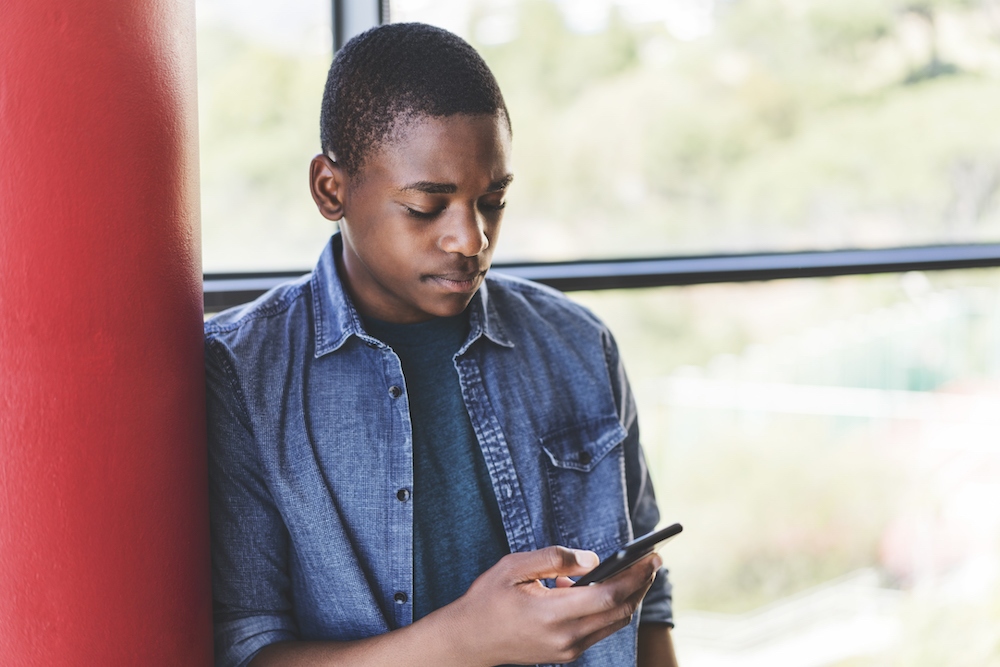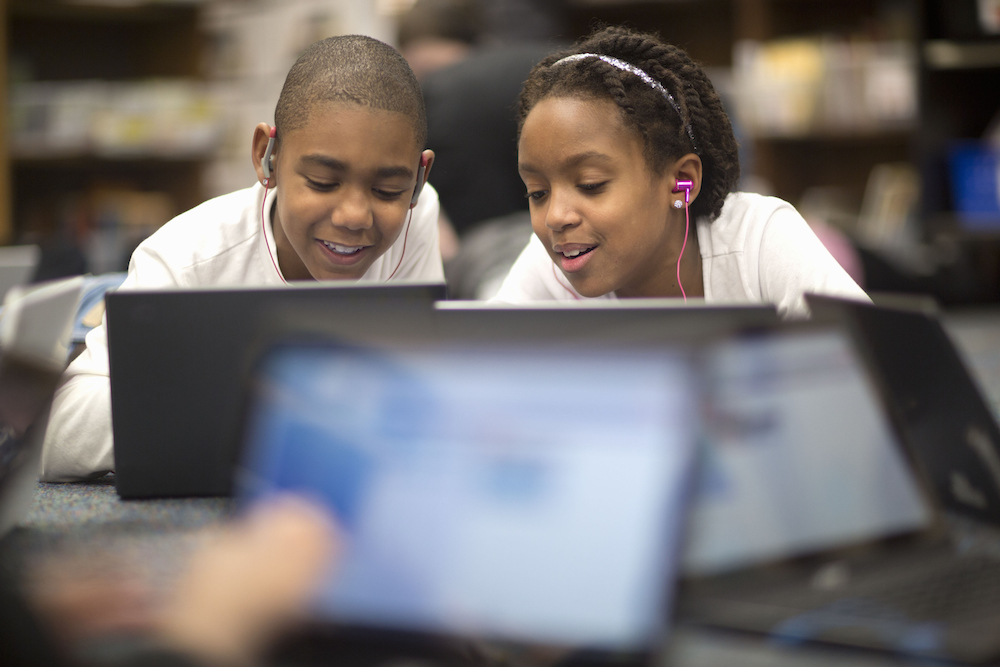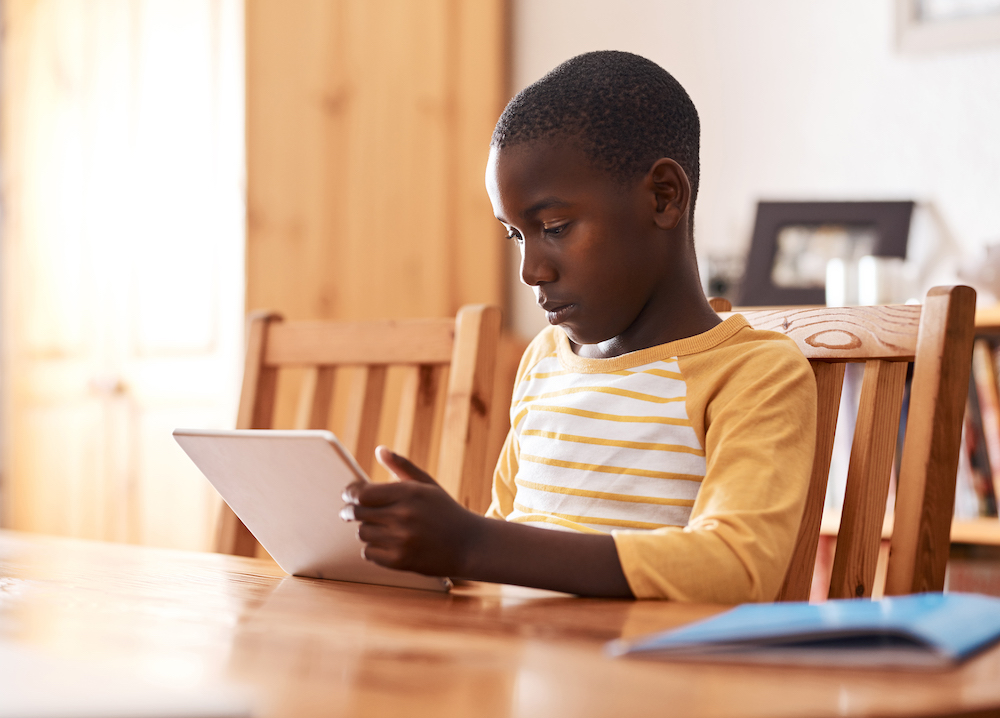Lesson 1: What is the Internet and How Do We Connect to It?
Before you start the lesson, make sure to read through the lesson overview and the lesson preparation. The Facilitator Guide can also help you prepare.
Lesson Overview
Learners will develop an understanding about how the internet works and how it can serve as a tool in everyday life. Learners will uncover different ways that computers are connected to the internet and how information is shared. Learners will also explore how devices access and connect to the internet.
Lesson Preparation
ESTIMATED TIME
ESSENTIAL QUESTION
- How can the internet be used in our everyday lives?
MATERIALS
- Blank Sheets of Paper (one per every pair or small group of learners)
- Pen or Pencil
- Handout of the Image from Statista (one per every pair or small group of learners)
- "How to Connect to the Internet Using a Device" Handout
PREPARATION
- Learners will need to be seated in pairs, triads, or small groups for discussion.
- Provide learners with a list of the key vocabulary for this lesson.
OPTIONAL: ISTE DIGCITCOMMIT COMPETENCY
- ENGAGED: I use technology and digital channels for civic engagement, to solve problems, and be a force for good in both physical and virtual communities.
Lesson Hook [10 minutes]
Handout the image below to your students and lead a discussion about the topic:
Teacher's Note
Lesson hooks provide facilitators with a baseline for how much learners know prior to engaging in the content of the lesson.
ASK YOUR STUDENTS
- What logos or brands do you recognize?
- What are they famous for?
- What services do they provide?
- Possible answers include:
- Chatting
- Entertainment - Music/Videos/Film
- Connecting People
- Shopping (E-Commerce) and Shipping
- Based on your context (see terminology) and understanding of the internet, how much time do you think is being represented in this chart?
- More specifically, with YouTube, how much time would it take for 500 hours of video to be uploaded by users?
- The answer is one minute.
TELL YOUR STUDENTS
This image demonstrates how some companies provide service to people using the internet.
According to data (compiled by Visual Capitalist), a single internet minute holds:
- More than 400,000 hours of video streamed on Netflix.
- 500 hours of video uploaded by users on YouTube.
- Nearly 42 million messages shared via WhatsApp.
- That same internet minute also contains more than 6,500 packages shipped by Amazon.
- That same internet minute contains 208,333 participants in Zoom meetings.
Group Discussion [10 minutes]
Learners will develop an understanding about how the internet works and how it can serve as a tool in everyday life.
ASK YOUR STUDENTS
- Although you may know about the internet, have you ever stopped and thought: “What is the internet?”
TELL YOUR STUDENTS
With a partner or small group, take two minutes to discuss and write down your ideas.
Teacher's NoteFacilitate a whole group discussion (two minutes) and write their answers on the board.
After the sharing session, write these definitions on the board:
- Internet: The internet is a network that links computers together and allows information or data to travel from one computer to another.
- Network: Connects computers together. For example, telephone wires connect your home phone to other phones and allow you to connect with other people who are in the phone network.
- Data: The ability to be aware of, create, collect, represent, evaluate, interpret and analyze data from digital and non-digital sources.
Allow learners to react to the three definitions.
ASK YOUR STUDENTS
- Are there any similarities or differences between what you think the internet is and the definitions provided?
- How do these definitions play a role in a website like YouTube?
- Examples:
- YouTube: A streaming website on the internet that uses login/passwords to allow individuals to access their data/content.
- Internet: Connects you directly to YouTube.
- Network: Individuals use computers/devices to be connected to the internet through satellites or mobile phone networks.
- Data: Access to the library of videos and resources on YouTube.
Class Interaction [10 minutes]
Learners will uncover different ways that computers are connected to the internet and how information is shared.
ASK YOUR STUDENTS
- Now that we have a basic understanding of the internet, how do people use the internet?
TELL YOUR STUDENTS
Take two minutes to discuss with a partner. We will share your responses when you are finished.
Teacher's NoteAfter about two minutes, ask learners to share their responses. Write their answers on the board. Possible answers include:
- Chatting
- Shopping
- E-mail
- Looking at Funny Websites
- Sending and Making Videos
- Watching Movies
- Gathering Information
Categorize the answers on the board. Most of the answers may fall into the following categories:
- Communication
- Entertainment
- Work
Class Interaction [20 minutes]
Learners will explore how devices access and connect to the internet.
ASK YOUR STUDENTS
- The internet has clearly changed the way people interact and live their lives. What are some examples of devices that use the internet today?
TELL YOUR STUDENTS
Take two minutes to discuss with your partner. We will share your answers when you are finished.
Teacher's NoteAfter about two minutes, ask learners to share their responses. Write their answers on the board. Possible answers include:
- Phones
- Computers/tablets
- Televisions
- Gaming Systems
- Cars
ASK YOUR STUDENTS
- Now that we have identified devices, how do these devices connect to the internet?
TELL YOUR STUDENTS
Wireless internet is a common way to connect devices to the internet. Wireless internet uses radio signals to connect devices without a physical or wired connection.
Teacher's NoteShow the image on the handout to your class.
Use the image to describe how to connect to the internet using a device.
TELL YOUR STUDENTS
Mobile devices use a cellular connection to connect to the internet, especially if they are not in a school, library, or home network. Cellular connections are a type of wireless radio signal that has a much larger coverage area than a router has. Cellular connections use particular transceivers, called cell towers, to connect your mobile device to the internet.
Takeaways [10 minutes]
Teacher's Note
Recap the lesson with these points.
TELL YOUR STUDENTS
The internet is a vast network of computers linked together via a network worldwide.
The internet has changed, and will likely continue to change, the way we live in modern society.
People use the internet everyday in their lives to communicate, work, research, and for entertainment.
People connect to the internet using a wide variety of devices, such as computers, cellphones, televisions, gaming devices, and cars to share information.
There are multiple ways to connect to the internet wired or wirelessly.
Congrats!
You've finished the lesson



 Back to Overview
Back to Overview 




